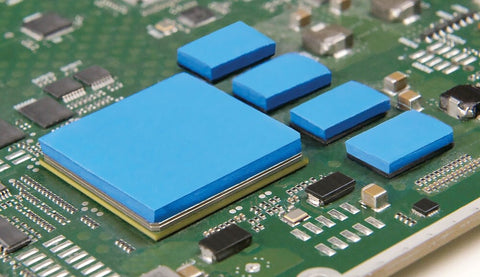
Summary: In aviation systems, crystal resonators are foundational timing elements that enable consistent synchronization across communication, navigation, and avionics subsystems, even under extreme conditions. By leveraging the stable oscillatory behavior of quartz, these resonators deliver highly reliable, low-drift frequency references critical to safety and system integrity.
Precision timing is the cornerstone of advanced navigation systems. Crystal resonators for aviation are the backbone of precision timing in communication and navigation electronics. These powerhouse electronic components ensure aircraft systems remain synchronized, reliable, and safe, regardless of altitude.
In Aviation, Timing Is Everything
Modern aircraft depend on real-time data exchange to operate safely and reliably, from communications with air traffic control to in-flight navigation and collision avoidance. Even a delay of microseconds can lead to system errors, compromised safety, or communications failures.
Failure isn’t an option when it comes to aviation safety, and precision timing is what keeps aircraft safe in the air. Crystal resonators create highly stable oscillating frequencies that serve as timing references for critical avionics. They ensure every system speaks the same language, on time, every time.
How Crystal Resonators Work
Crystal resonators use the electrical charge quartz naturally produces to maintain a precise and stable oscillation. This natural frequency remains remarkably consistent, even under harsh operating conditions such as temperature extremes and vibration.
The consistency of crystal resonators is essential for maintaining communication clarity in aircraft, preventing timing drift in navigation systems, and synchronizing digital data processing across multiple avionics systems. Additionally, these components are extremely stable, consume little power, and provide long-term accuracy, all prized qualities in an aircraft.
Applications Across the Cockpit
Because of these advantages, crystal resonators are found in nearly every piece of avionics equipment, including:
-
GPS and GNSS modules
-
Transceivers used in pilot-to-ground communications
-
Flight data recorders and cockpit voice recorders
-
Automatic Dependent Surveillance-Broadcast systems
-
Radar and identification systems
In each of these systems, crystal resonators work tirelessly behind the scenes to maintain accurate, synchronized system timing to maintain system integrity and safety. They may not be visible to pilots, engineers, and operators, but they play a critical role in keeping aircraft safe in the skies.
Imtron stocks best-in-class TXC crystal resonators. Get in touch with us for help sourcing resonators for your avionics equipment.
Crystal Resonator FAQs
Why are crystal resonators essential in aviation electronics?
Crystal resonators provide ultra-stable frequency references used to synchronize communication links, navigation systems, radar, and data transfers, avoiding timing drift that could compromise safety.
How do crystal resonators maintain accuracy in harsh conditions?
Resonators exploit the piezoelectric properties of quartz to maintain a precise oscillation that is resilient to temperature variation, vibration, and aging. This ensures long-term stability, even in demanding environments.
In which avionics applications are crystal resonators commonly used?
They appear in GPS/GNSS modules, transceivers, flight data recorders, ADS-B systems, radar, identification systems, and cockpit communication gear, anywhere precise timing is required.
What benefits do crystal resonators offer compared to other timing solutions?
They are highly stable over time, consume minimal power, produce low phase noise, and offer dependable performance in extreme conditions. These traits are critical in aviation applications.



